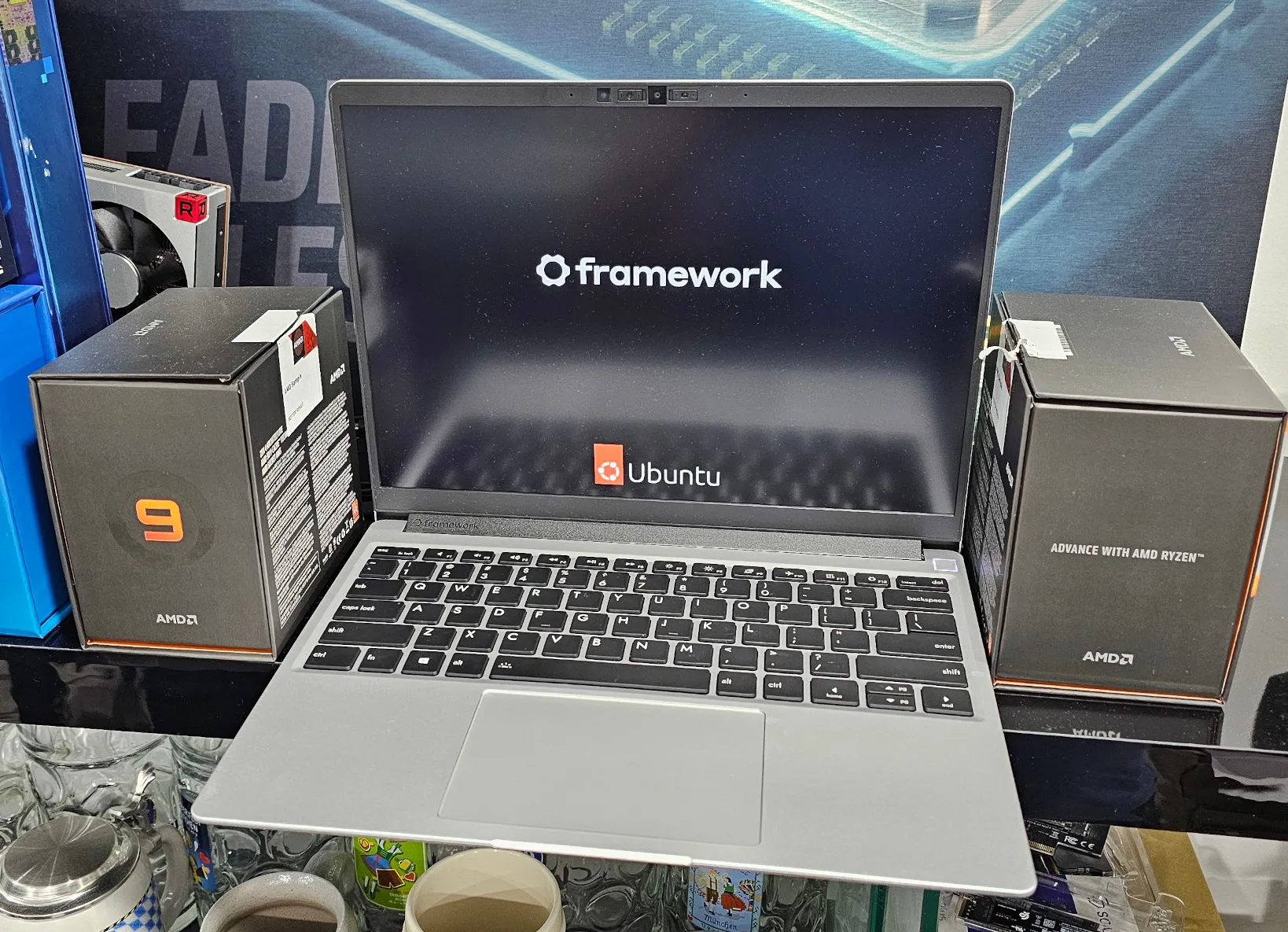Sorry, book broke
- 22 Posts
- 235 Comments

 41·1 month ago
41·1 month agoRebecca black Linux is for the real men though.
Most forward thinking distro. First to ship with Wayland by default and the only of the three still getting constant updates.
No competitor really. It’s always Friday Friday, gotta boot up on Friday with rbos my friends
The issue with that is potentially keeping software which has security bugs on your system for longer than needed. Also, if you install new software you’ll have a partial upgrade which can degrade your system. If you don’t install anything though, your system should work as it currently does without issue. Unless a particular app takes something from the internet which may need the upgraded software (say, discord, spotify, etc. as they’re electron based.)
If that’s what you want to do I would suggest switching to xubuntu, mint xfce edition, DSL, etc. as they’ll still patch security updates in. You do you though of course as with your stated usecase I can’t see any functional issue. I don’t see the reason for arch though.
Absolutely. Here’s three options
Fedora updates every, or around every, 3 months. This is very stable but very up to date.Most professional devs particularly ones working in Linux projects use it fornit’s relative stability while having modern packages.
There’s also PopOS! which is a rolling release, updating daily, but much more delayed than arch thus being much more usable.
Now for my favourite, OpenSuse Tumbleweed. Same style as PopOs but with a KDE, or gnome spin or of the box. A bit more sleek too. It also has YAST which is the best GUI based managment system on Linux.
I use arch (btw) but have a second duel booted tumbleweed install for work related stuff in order tonensure stability
I just love cinnamon orange, but I at one point had some beautiful hot pepper tea too which I wish I could find again
deleted by creator

 2·1 month ago
2·1 month agoHuh, I’m always happy to proven wrong. thank you for bringing this up.
Is this still relevant however with blood testing becoming more prevelant? The main reasons listed are due to harms caused by probing both physical and psychological along with false positives which out-weigh the positives of a 0.128% life saving outcome. It’s been 6, nearly 7 years now and prostate testing is both more accurate and non-invasive
Either way, this body is currently in the final research plan stage of updating the recommendation.
https://www.uspreventiveservicestaskforce.org/uspstf/draft-update-summary/prostate-cancer-screening-adults
I’d agree we should stand by the current assessment though until it changes. Thank you for the correction

 782·1 month ago
782·1 month agoThis is the perfect opportunity to recreationally infect yourself with rare short term diseases. Try breaking your arm or nose so you have a story. Self harm has never been so cheap.
Edit: See evasive_chimpanzee’s comment here, as the following seems to be incorrect information
Seriously though get checked for prostate cancer. Especially if you’re over 25 it’s very possible and catching it early will be a massive difference.
Same for everyone reading this. I doubt it’s that expensive so please look into it and get checked if affordable where you are.

 4·2 months ago
4·2 months agoYeah don’t worry about it too much. Ensure you have the correct name when installing your library but that’s about all you can do personally.
Any other solution will have some security flaws. NPM has a few more than it should but essentially the entire web is built around it. Sorry man, you don’t have any other choices.
How to use it properly? Any npm tutorial will show you quickly. Always check you’ve got the right thing, always check the library is large enough that if something goes wrong it’ll be noticed, and know there’s no way to be completely safe without never using libraries.
If you’re learning the web though there’s no way to avoid npm.

 3·2 months ago
3·2 months agoEdit: these suggestions are last resort type stuff tbf, hope the guys in the other thread are more help. Looks like someone suggested session restore w/ kde which makes alot of sense.
Ok that’s increadibly weird. Here’s some places I’d look.
I’d start looking in environment files such as ~/.bash_profile, .~/.profile, /etc/environment, /etc/profile and a few others. Maybe there’s a call to the application in one of these files?
Secondly, I’d attempt to write a bash script to walk a directory tree, cat out files, pipe it through grep and get every instance where VirtualBox is mentioned in a file. Trying the name of proccess, or of the executable too.
I have a snippet that may help, by replacing that bash script:
grep -Rinw '~/path/to/start/' -e 'VirtualBoxOrSmthngElse'all credit to this answer on SO:
https://stackoverflow.com/a/16957078/11534230Head there to see how to try and wittle down the matches. I’d start in a etc, ignore binary files with grep, and try everywere systematically
This is likely overkill lol. If you’re on xorg maybe there’s something in the file xorg uses for init? Can’t remember the name personally but I used it to start up some processes before on system boot quite a while ago

 3·2 months ago
3·2 months agoYou do make some good points on it being terminalside, you’ve partially changed my mind there. I see the value now.
Also, you would be correct anything that allowed collapsing commands would be trivial to implement some sort of action per command and it’s output. Along with collapsing being easiest to do terminalside.
What I would love to see is a terminal that builds it’s own shell from scratch too rejecting the ancient ideas we have with bash. I still love bash but I’m curious what could come of it.
As for their luddite status their reply to my previous comment seems to show them to be a bit more open
Seriously though thanks for the good conversation and thought excersize

 17·2 months ago
17·2 months agoKonsole can display images, as can kitty, alacritty, western, iterm2, etc. There’s quite a few formats to do so dating back decades. This isn’t new.
As for collapsing a command and it’s output that’s nice, but it’s not exactly game changing.
Lastly, searching explicitly your last command for a term with context would be much better suited to the shell to solve as it’d be terminal independent. Wouldn’t surprise me if under the hood it’s a bash script that takes whatever input you pass to bash, execs it, pipes stdout to tee, which passes it to a text file storing output and the console’s output too. Of course, you can always pipe it to fzf for a live grep with context if you have it set up right and remember to do so
I would agree just denying any advancements in favor of the “good ole way” is idiotic but nothing I’ve seen or that you’ve listed convinces me these are major advancements. Nor are these anything that couldn’t be solved at the shells level or with supplementary applications. Nice to have, if it weren’t electron or closed I would switch, but nothing groundbreaking
I doubt they’re outright rejecting any idea of progress. They’re likely just not convinced by what the fancy options offer

 2·2 months ago
2·2 months agoHell yeah, now that it finally works with Wayland on nvidia with explicit sync being added to the 555 drivers it’s been great for me

 2·2 months ago
2·2 months agoSadly not entirely. Some were small differences in the size and shape of ramps particularly where they conjoin which is what caused alot of them but even with new, perfect placement it’s still happening. What’s caused them to be greatly minified is a manual fix that checks for major changes in velocity in a direction not expected then adjusts for it server side, resetting your position, momentum, and direction to what was likely your intended route. This is still, frustratingly, not perfect especially with high ping

 2·2 months ago
2·2 months agoSadly, yes. I’ve been following a few efforts and everything needs to be rebuilt. What little auto tooling exists creates more issues than it’s worth. This is why we’ve seen cache take so long to recreate.
There have been some, especially smaller, maps remade but once more they’ve got way too many issues to be put into mainline CS yet. This is why we only have had two new maps since the beginning. It takes immense dedication from talented map builders.
Even simple surf maps have been a major pain with ramp bugs being common on even the best, and smallest

 1·2 months ago
1·2 months agoAt this point I doubt valve knows. I miss agency

 15·2 months ago
15·2 months agoAnd vim, of course

 21·2 months ago
21·2 months agodeleted by creator

 6711·2 months ago
6711·2 months agoAll hail the cuck license, ensuring we end up back at the same place every single time.
Good intentions and all that

 51·3 months ago
51·3 months agoThis is an old standard, long ago when CSS wasn’t a big thing, and even when it was when it was much less featureful, tables where the only way to properly position things. This is no-longer the case and is now bad practice and has been for more than a decade. This is due to defailt styling added to list elements along with a few other issues with speed and consistancy
Don’t know them, but this seems an older Dev who learned something one way and is entirely unable to adapt with changing technology. This is a danger, and has been the reason for quite a few major, very expensive, issues at companies I’ve been contracted at. Sure, using tables and lists is not a big issue, but what else will he do and defend aggressively? I’ve seen the same with a person arguing SQL injections are fixed because he took out all comment characters before concatenating a string for an SQL query.











You gotta rest up man, that’s a pretty big job for one star